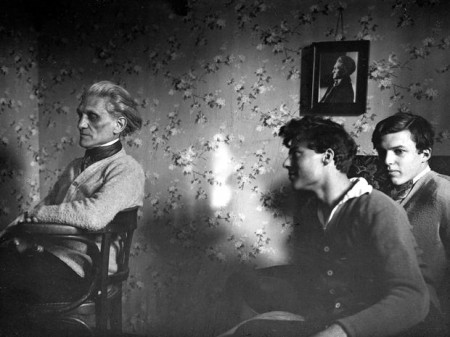Justin E. H. Smith
 The last time I went to a poetry reading, I was made to sit patiently as a preening, college-age jack-ass indignantly declaimed, in verse that could only be called 'free', his strong disapproval of Dick Cheney. A serious issue, to be sure, but certainly not serious in a way that gets my poetic imagination going. If I confess a sympathy for what Stefan George called 'pure aestheticism' in poetry, this is not because I believe myself to be above politics, but because I believe that poetry is above current events, and by 'current' I mean whatever social world human beings have managed to throw together for themselves, for now, until it comes apart. Leave engagement with that to prose, which is to say to the vastly greater part of what language does in this, what Walter Benjamin rightly called our 'prosaic age'. Prose is the (more or less) formally unrestricted use of natural language for the telling of captivating things about the world. The formal restrictions of poetry, by contrast, bring it about that whatever poetry says about the world, it is always also saying something about language. This means, among other things, that translating poetry is at least something quite close to writing poetry (unless we take Nabokov's hyper-literalist translation of Evgenii Onegin, which was meant precisely to illustrate that a true translation of one language's poetry into another can only come out as prose). Someone who has translated a novel, by contrast, certainly could not be said eo ipso to have written a novel.
The last time I went to a poetry reading, I was made to sit patiently as a preening, college-age jack-ass indignantly declaimed, in verse that could only be called 'free', his strong disapproval of Dick Cheney. A serious issue, to be sure, but certainly not serious in a way that gets my poetic imagination going. If I confess a sympathy for what Stefan George called 'pure aestheticism' in poetry, this is not because I believe myself to be above politics, but because I believe that poetry is above current events, and by 'current' I mean whatever social world human beings have managed to throw together for themselves, for now, until it comes apart. Leave engagement with that to prose, which is to say to the vastly greater part of what language does in this, what Walter Benjamin rightly called our 'prosaic age'. Prose is the (more or less) formally unrestricted use of natural language for the telling of captivating things about the world. The formal restrictions of poetry, by contrast, bring it about that whatever poetry says about the world, it is always also saying something about language. This means, among other things, that translating poetry is at least something quite close to writing poetry (unless we take Nabokov's hyper-literalist translation of Evgenii Onegin, which was meant precisely to illustrate that a true translation of one language's poetry into another can only come out as prose). Someone who has translated a novel, by contrast, certainly could not be said eo ipso to have written a novel.
What language is poetry about? Generally, it is about the language it is in. In translation, in turn, poetry is about the limitations of the fit of one language with another. These two facts together mean that, in writing poetry, in contrast with prose (more or less), it matters what language one is writing in. I have become convinced, in fact, that good poetry, the best poetry, is the poetry that seeks to lay bare the essence of the language that serves as its medium. Now I understand that from a historical-linguistic point of view languages do not have essences, but are ever-evolving accretions of borrowings, local adaptations, creolizations and mishearings, but that does not change the fact that, in terms of expressive power, 'life', 'earth', and 'kin' sound closer to the soul of English than, say, 'vitality', 'terrestrial', or 'family'. I have thus also come to appreciate the extent to which the essence of English is Anglo-Saxon and Germanic, and to think that no one understood his task as a poet better than Seamus Heaney, when he undertook to translate Beowulf into modern English, in part, as he explained, to come to better know not just the source language, but also the target language.
Read more »
The theory of relativity showed us that time and space are intertwined. To which our smarty-pants body might well reply: Tell me something I didn’t already know, Einstein. Researchers at the University of Aberdeen found that when people were asked to engage in a bit of mental time travel, and to recall past events or imagine future ones, participants’ bodies subliminally acted out the metaphors embedded in how we commonly conceptualized the flow of time. As they thought about years gone by, participants leaned slightly backward, while in fantasizing about the future, they listed to the fore. The deviations were not exactly Tower of Pisa leanings, amounting to some two or three millimeters’ shift one way or the other. Nevertheless, the directionality was clear and consistent.
